History of Nintendo
The history of Nintendo tells the fascinating story of how a small Japanese game company developed into a dominant empire.
The Jackie Robinson of baseball. The Shakespeare of literature. The Beethoven of music. Nintendo’s impact on the gaming industry has been nothing short of revolutionary. The first to perfect the 3D gaming experience, the first to have successful wireless controllers for their consoles, and the first to allow users to save their files within a game, Nintendo's innovative creations continue to entertain even the realest of gamers.
Nintendo’s inventive concepts have developed into staples of the modern gaming world, many of which can be traced back to some of their original games created during the 80s and 90s. It was in 1987 that the concept of “saving game progress” came about through The Legend of Zelda. In 1996, Nintendo perfected the 3D gaming experience with the release of the vintage Super Mario 64. In 2002, they released the first successful wireless controller for the GameCube. These features, just three of the countless that Nintendo was first to master, completely reshaped the video game industry and set off intense competition between Nintendo and other growing companies––the lead rival being Sega. The thing is, Nintendo wasn’t always the massive video game empire they are today.
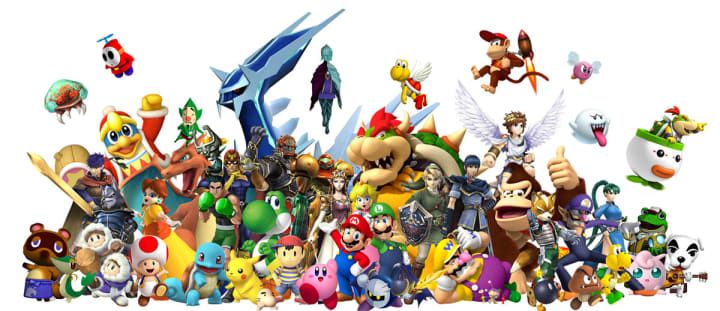
Image via Nintendo Store
Humble Beginnings
In order to give you a full and accurate history of Nintendo, I’m going to take you way back to the late 1800s in Kyoto, Japan. It was in Kyoto in 1889 where one of the most revolutionary gaming companies of all time was conceived.
While nobody could have predicted what the company would evolve to nearly 125 years later, Nintendo’s original business model was a simple card-playing company. Founded by Fusajiro Yamauchi with the name Nintendo Koppai, the company produced handmade cards and marketed a game called Hanafuda. The cards could be used to play a variety of games, similar to a modern 52-card deck. The game immediately gained popularity throughout Japan, and in order to satisfy the enormous demand, Yamauchi hired assistants to mass produce the cards. Up until the mid 1950s, Nintendo remained a medium-sized card playing company based mainly in Japan.
It wasn’t until 1956 that a new phase of the company began and Nintendo delved into new ventures in search of profits. It began when Hiroshi Yamauchi, grandson of Fusajiro Yamauchi, took over as the third president of Nintendo. He began his reign in 1949 at the age of just 22. He didn’t step down until 2002 after being credited with transforming Nintendo from the small card-making company to a multibillion-dollar video game company. Yamauchi has been described as “the man who built Nintendo’s gaming empire.”
Nintendo’s transformation from card playing to the video game industry didn’t happen overnight. Like most companies and start-ups, it took a couple of failed ventures before they were able to find where they belonged in the marketplace.
Yamauchi went to the United States in 1956 with the hope of expanding his card playing company. He soon realized that this business had limited potential. In a major turning point of the company in 1963, Yamauchi renamed Nintendo Playing Card Co. to Nintendo Co. and immediately began venturing into new businesses. A failed taxi company called Daiya was first, followed by a failed love hotel chain, a failed TV network, and finally a failed food company. In 1964 after the Tokyo Olympics, playing card sales dropped and Nintendo’s stock price plummeted to its lowest number recorded in history.
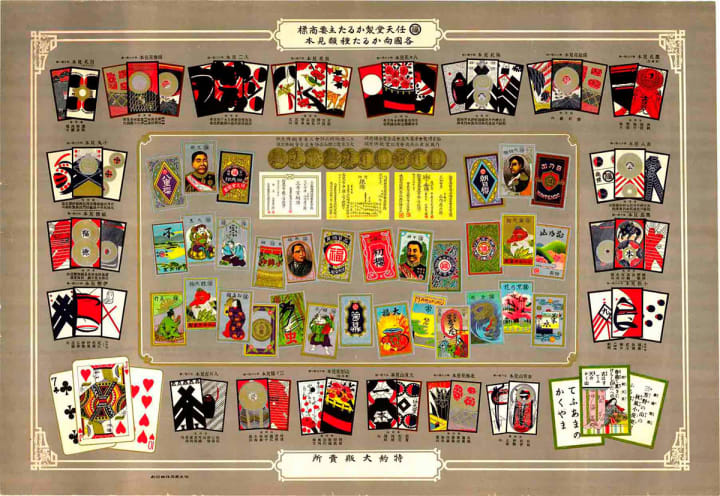
Image via Wikipedia
A New Vision
With numerous failing businesses over the course of just a few years, it would have been easy for Nintendo to cease operations. After limited success in the Japanese toy industry between 1966 and 1973, Nintendo shifted their focus for the first time towards family entertainment with the production of the Laser Clay Shooting System. The game was a light gun shooting simulation that consisted of an overhead projector, which displayed moving targets that players would fire at with a play-rifle. While the game did not take off as much as Nintendo hoped, they made enough profit to explore other options within the family entertainment and gaming industry. For the first time, they had found a market for which there seemed to be profits.
As the 1970s moved forward, the concept of home video gaming emerged for the first time. Nintendo immediately saw the enormous potential within the industry. Their first venture into the video game industry began in 1975 as they secured the rights to distribute the Magnavox Odyssey in Japan. The Magnavox Odyssey was the first commercial home video game console, and marked the end of the early history of video games. This began the rise of the commercial video game industry.
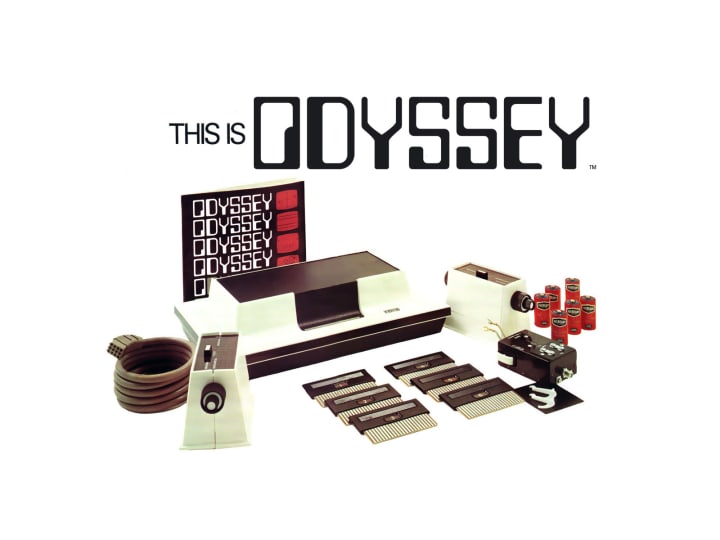
Image via The Salt Lake Tribune
The Rise of Electronic Gaming
Despite the fact that home video game consoles were still relatively rare during the 70s and early 80s, Nintendo earned some success with the Odyssey and began to develop its own video games both for home and arcades. Led by the famous Gunpei Yokoi and a young group of game developers, the company began to expand its video game division in a production plant in Uji City, Japan (a suburb of Kyoto). The 1980s saw Nintendo develop some of its most famous arcade titles. Nintendo's first arcade game was EVR Race in 1975, and the massively popular Donkey Kong was created in 1981. The games were originally released in arcades and on some of the popular video game systems of the time, such as the Atari 2600, Intellivision, and ColecoVision. In addition to the development of console games during the late 70s and early 80s, Nintendo was up to something. The decision to venture into handheld video games marked the beginning of a new era of Nintendo and the electronic gaming world.
Nintendo’s first handheld video game was the Game and Watch, which was released in 1980. The game was the first portable LCD video game with a micro processor, and it was the earliest Nintendo product to achieve major commercial success (selling 43.4 million units worldwide). Each Game and Watch featured a single game to be played on the screen, and additionally contained a clock and/or alarm. This was just the beginning of handheld electronic gaming.
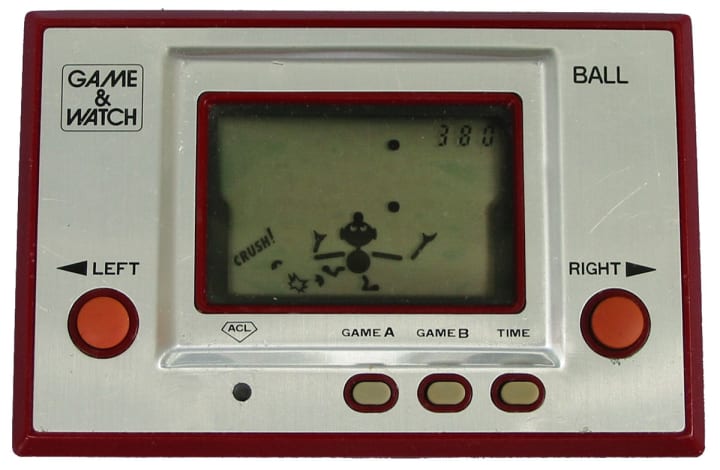
Image via Giant Bomb
The Breakthrough
In 1984, after expanding its production capacity to allow for business expansion, Nintendo launched the Famicom (family computer) system in Japan, their first attempt at cartridge-based video game consoles. After a series of issues including a massive video game crash that nearly took out global demand for video games, Nintendo eventually released the Famicom worldwide in 1985 under a new name: Nintendo Entertainment System (NES). Attempting to avoid some of the problems that led to Atari and some of their other competitors' failure, Nintendo released the system with a R.O.B. (robotic operating buddy) to assure that the console and games were synchronized and easy to use together. With the NES came some of the most popular Nintendo games of all time, ranging from Super Mario Bros. to the Legend of Zelda. The combination of the development of the NES and subsequent release of some of these popular games between 1985 and 1988 resulted in worldwide success for Nintendo. In 1986, the NES was launched in Europe and became a must-have in homes everywhere.
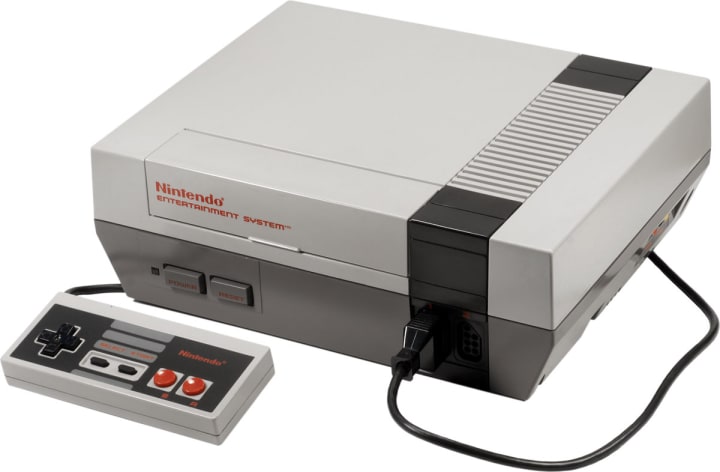
Image via Nintendo
The Console War: Sega Versus Nintendo
Sega versus Nintendo: the console war that arguably laid the foundations of the video game industry as we know it today. The Sega/Nintendo battle of the late 80s and early 90s is best known as the first clash between Sonic and Mario––the speedy hedgehog against the kingdom’s most famous plumber.
In 1990, Nintendo accounted for 90 percent of the US’s video games sector. In 1994, Sega leapfrogged that, thanks to the popularity of Sega Genesis, a 16-bit home video game console.
“Genesis does what Nintendon’t”
While Nintendo was developing the NES, another aspiring video game company was working on their own home video game console. Sega, led by an inspiring visionary named Tom Kalinske, attempted to take on the powerhouse that Nintendo had quickly become. Sega had been producing a competing 16-bit console, Sega Genesis, which released in America in 1989.
The developments of Nintendo versus Sega are compared to the story of the tortoise and the hare. When Sega came onto the scene, they were extremely flashy and quick paced, with an emphasis on campaign style over design. On the other hand, Nintendo was more focused on gameplay and game development—less on marketing. The tortoise strategy appeared most effective with the release of Donkey Kong Country, which helped Nintendo regain its lead over Sega in the last months of 1994.
“Nintendo is what Genesisn’t”
Additionally, one of the most important distinctions between the strategies of each company came in the common argument of quality versus quantity. Nintendo became obsessed with the quality of their titles, thus producing much fewer games than Sega but at a much higher quality of game. In contrast, Sega aimed to boast an extremely large game library, resulting in many failed games and a few hits (most notably the Sonic the Hedgehog series).
Based on the number of units sold, the NES won this console war due to the incredibly high quality of its games. However, the Sega Genesis surely made its impact on the gaming industry of the time, and served as the driving force behind Nintendo's continued innovation.
The wars between Sega and Nintendo lasted from the 8-bit era of the 1980s to the 32-bit era of the late 1990s and early 2000s. In 1995, Sega was forced to close all of their American developer accounts, moving instead to third-party development.

Image via BBC News
Sustainable Success
With continued research and some of the top developers in the world now working on its projects, Nintendo released theGame Boy in Japan in 1989. The Game Boywas the first portable, handheld game system with interchangeable game cartridges, and was released along with a game still played by millions today—Tetris. The Game Boy sold extremely well due to its low price and durability, eventually amassing sales of around $120 million.
The next big move for Nintendo was the launch of the Super Famicom (SNES) in 1990 in Japan, another extremely successful product of a company that had recently begun to establish itself as a worldwide video game empire. Next came the Super Famicom in the US in 1991 and Europe in 1992. The system went on to sell more than 46 million units worldwide. In addition to this console release, 1992 saw the launch of the long-awaited Zelda sequel, The Legend of Zelda: A Link to the Past.
Over the next few years, Nintendo did an incredible amount of development for the graphics and technology of their new products. While Nintendo's systems proved successful, they knew in order to sustain it they would need to continue to develop better technology. ACM Graphics were introduced to the Game Boy and SNES in 1995, and Nintendo began selling the SatellaView adapter for the systems, enabling them to receive digital data from a broadcast satellite. Both resulted in much better gameplay and display on their systems and games, and overall better products.

Image via International Business Times
Nintendo Worldwide
1996 was a huge year for Nintendo with the launch of the classic Nintendo 64, the world’s first 64-bit home video game system. More than 500,000 systems were sold on the first day as thousands lined up to experience the revolutionary console. Nintendo also released the Game Boy Pocket that year, a 30 percent smaller version of the world’s most popular handheld device. Super Mario 64, which was released with the Nintendo 64, is often proclaimed as the greatest video game of all time. While they are surely hard to find, there are still Nintendo fans playing it even with systems such as the PS4 and Xbox One on the market. The game is that good.
And finally, the moment you’ve all been waiting for: the first Pokémon game was released on February 26, 1996 in Japan for the Game Boy and immediately became a worldwide phenomenon. Gamer or not, I’m sure you’ve heard someone say, “Gotta catch ‘em all,” at some point in your life. The Pokémon series has featured over fifteen games and is still played by millions today. To sum up its impact, Nintendo has sold more than 277 million Pokémon games, over 21.5 billion trading cards in ten languages, and made seventeen feature films based off the series.
The Game Boy Color was released in 1998, bringing new life to their already popular interactive handheld entertainment. In September 2001, the Nintendo GameCube was launched and 2.7 million units were shipped by December of that year. Super Smash Bros. Melee was the bestselling game on the system, selling more than 7.1 million copies worldwide.
After 52 years at the helm of Nintendo and completely transforming the electronic gaming industry, Hiroshi Yamauchi announced his retirement in 2002 and named Satoru Iwata as his successor. By the time of his retirement, Nintendo had become the leading video game company in the world.
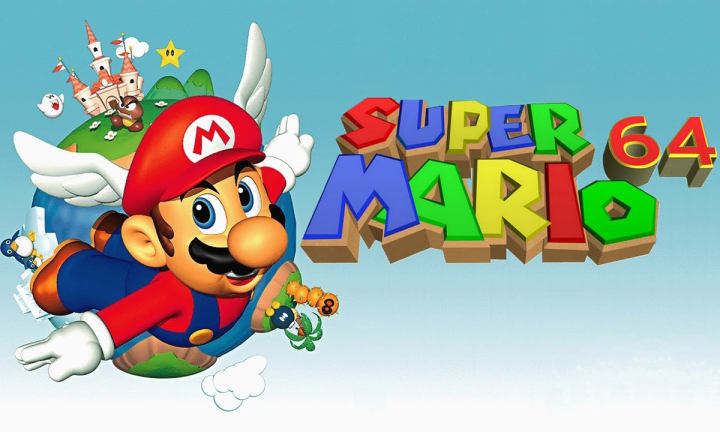
Image via My Nintendo News
Modern Nintendo
In 2003, the Game Boy Advance SP was released, building further on the success of the Game Boy phenomenon. In addition, one of the most popular franchises of all time returned to the GameCube in 2003 with the launch of Mario Kart: Double Dash, the classic racing game only enabled by Nintendo’s innovative controllers.
The extremely popular Nintendo DS was launched in 2005 to immediate success. It featured two screens, wireless multiplayer, Touch Screen technology, and backward compatibility with Game Boy Advance titles. It was one of the most advanced systems of the time. By 2006, the DS had become the most popular portable console in the world. 2006 also saw the launch of the Wii, a new home console that required an actively moving controller in order to play. The console found an extremely large audience made up of both Nintendo fans and those who do not traditionally play video games (due to its active nature).
After the release of the DS and Wii, Nintendo remained relatively quiet and did not release a new system until 2011. The Nintendo 3DS and the Wii U both improved developments of their older systems. Both proved extremely successful and are the most recent Nintendo consoles to be released. The 3DS was one of many new 3D technologies released at the time, but rather than using 3D glasses for its effect, it instead used parallax barrier autostereoscopy. This concept adds binocular perception of 3D depth without the use of any glasses or headgear.
Fast forward to 2016 when Nintendo released an augmented reality mobile app called Pokémon Go. Developed by Niantic for iOS and Android devices, it was released in the United States and Australia in early July 2016. The game makes use of the GPS and camera on mobile devices to combine the virtual reality of Pokémon with whatever is actually in front of you in real life. The game has taken the world by storm with millions of downloads within the first few days of the launch. Despite adding little revenue, Nintendo’s market value increased by about $9 billion with the release, as the potential for future Pokémon games and franchises was unveiled.
It wasn’t easy, but I just took you through the 127-year history of the most popular video game empire in history. Nintendo's impact on society has been enormous, with millions and millions of users across the globe. They began the electronic gaming revolution, and as technology advanced, they were able to adapt better than any of their competitors to what gamers craved the most: quality video games. Withstanding the video game crash of 1983 that nearly wiped out the entire demand for video games, Nintendo’s ability to provide entertaining games combined with impressive software was the ultimate reason behind their success. They hit plenty of speed bumps along the road, yet their leadership under Hiroshi Yamauchi ultimately prevailed. Their augmented reality developments seen through Pokémon Go show Nintendo surely still has some gas in its tank. What’s next for Nintendo as technology changes the way we game?
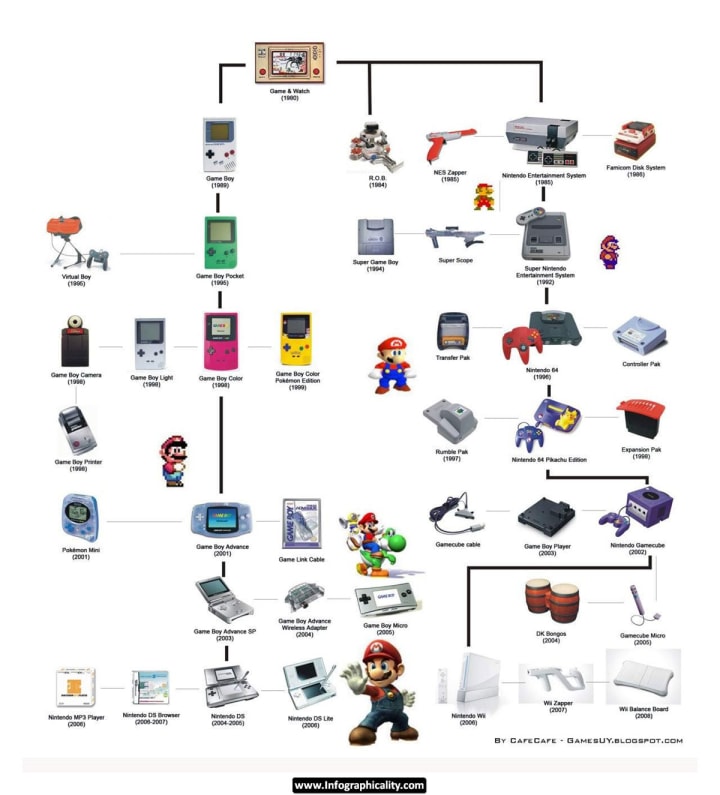
Image via ImageTUB
Recommended Reading
In order to hear the full story of Nintendo Vs Sega, author Blake J. Harris gives a behind-the-scenes business thriller of this all-out war. Based off hundreds of interviews with former Sega and Nintendo employees, Console Wars is sure to offer an intense analysis of this underdog story.
In a true David vs. Goliath story, Harris outlines how a small, scrappy gaming company took on the powerhouse of Nintendo in what became known as the first ever console war. Brother vs. brother, Sonic vs. Mario, US vs. Japan—there were no boundaries in this one. This is the real story of how this battle revolutionized the video game industry.
About the Creator
Matt Schkolnick
Penn State Graduate. Sports Fanatic. Entourage Enthusiast. Amateur Photographer. World Traveler.






Comments
There are no comments for this story
Be the first to respond and start the conversation.